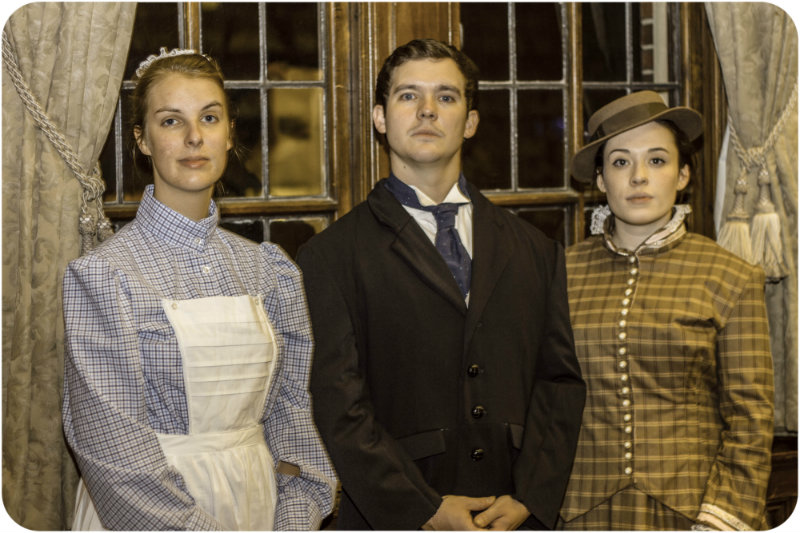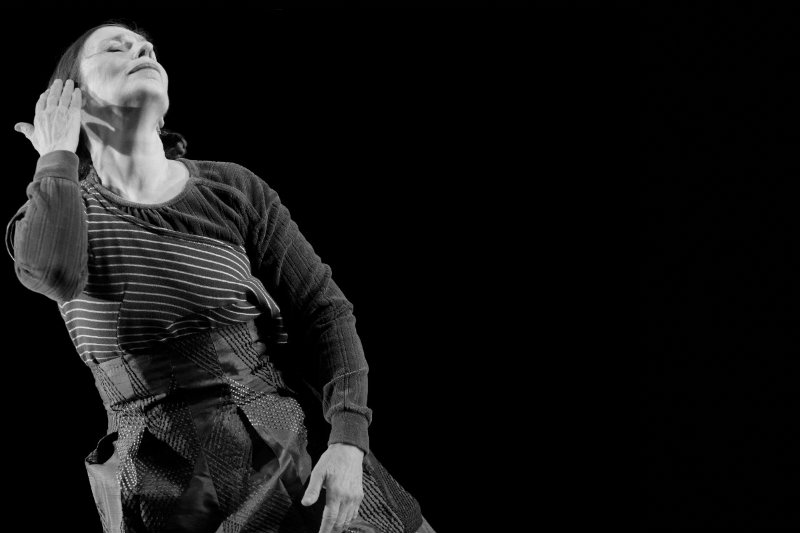Roundup: Nomo, Washi Con, A2 Monster Record Show
YES, ’MO: It’s been 7 years since the Ann Arbor-formed band Nomo released its last album, Invisible Cities (Ubiquity Records), but a few photos posted to the avant-Afro-gamelan-funk band’s Facebook page in August indicate a new record’s been made. We reached out to the band for info on when it might be released and haven’t heard back, but perhaps all secrets will be revealed when Nomo plays the Blind Pig on Saturday, January 21. And even though Nomo has been quiet for a long while, the band's core nine musicians have kept busy. Most prominently, saxophonist-leader Elliot Bergman moved to Chicago and released two pop-dub albums as Wild Belle (which includes his sister, Natalie) and formed the experimental Metal Tongues, whose sound is built on his hand-made kalimbas with synths and drums. Meanwhile, trumpeter Justin Walter has released a number of recordings under his own name, including the great 2013 LP Lullabies & Nightmares (Kranky), and saxophonist Dan Bennett leads his own jazz groups. (➤ Blind Pig event) (➤ Nomo)
Weird & Intoxicating: The Sixth Annual Ragtime Extravaganza

If the American ideal is defined by the coming together of various cultures to create a unique whole, then ragtime is the country's first musical example of that worldly synthesis.
Developed in African-American communities in the 1890s, the music combines African rhythms and syncopations, European harmonies, marches, and a Latin tinge to create a sonic brew that the King of Ragtime, Scott Joplin, described as "weird and intoxicating."
Detroit loved that weird intoxication and was a hub for ragtime during the music's peak period in the late 19th and early 20th centuries before it gave way to jazz. In fact, the Remick Music Shell on Belle Isle is named for Jerome Remick, one of the biggest publishers of ragtime music. (Read a history of Detroit ragtime here.)
Now, a hundred years after ragtime's apex, and 47 miles east of the Remick Music Shell, the sixth the annual Ragtime Extravaganza aims to recreate the look, feel, and sound of the music's classic era at the Michigan Theater on January 21.
Extravaganza organizer William Pemberton has always loved ragtime music and founded the River Raisin Ragtime Revue in 2002. He’s served as its president -- and tuba player -- ever since.
The Revue has grown to be one of southeast Michigan’s most respected performance groups, featuring musicians from across the state, including professors from Central Michigan and the University of Michigan’s music departments. And the Ragtime Extravaganza is the Revue’s biggest event each year -- and by far "the most fun," Pemberton said.
“I love that it takes place in a 1920s vaudeville house," he said, "and the whole idea of it is to re-create a feeling of the golden age of American entertainment: the ragtime, the vaudeville, and the burlesque eras. And it’s just perfect and you can just feel the energy in the house.”
Roundup: Matthew Dear, All Hands Active & Tanner Porter
NEW KICKS: When a musician gets asked to compile a mix for the DJ-Kicks series, it’s like a baseball player making the All-Star Game. Since 1993, the German !K7 label has had some of the world’s biggest electronic music artists, including Carl Craig, Hot Chip, Actress, and 54 others create DJ-set albums -- ones that still sell really well even though virtually every music website offers approximately 273,000 mixes to download for free.
Now it’s Matthew Dear’s turn to boot-up a mix, and the Ann Arbor artist and co-founder of Ghostly International is celebrating his DJ-Kicks album with a party at the Blind Pig on Friday, January 20. (UPDATE: Fellow Ghostly star Shigeto has been added to the gig.)
Dear will be DJing and dropping cuts from the 57th DJ-Kicks comp, which includes his new song, “Wrong With Us,” plus 24 more jams from the likes of Simian Mobile Disco, Pearson Sound, and Audion (aka Dear’s more dance-oriented alter ego).
Not familiar with Ghostly International or its sister label, Spectral Sound? If you’re an Ann Arbor District Library card holder, you can download almost everything the labels have released, free of charge, including many Dear and Audion classics. (➤ !K7) (➤ Blind Pig) (➤ AADL’s Ghostly/Spectral collection)
Good Vibrations: Civic Theatre's "In the Next Room" promises more stimulation than shock

On Monday, the cast and crew of the Ann Arbor Civic Theatre production of In the Next Room were busy with final preparations at the Arthur Miller Theatre, where the play opens Thursday.
The cast was doing a run through while director Melissa Freilich was busily taking notes and getting the perspective from every angle around the Miller’s thrust stage. The crew was making last minute adjustments to an unusual set and working with the sophisticated Miller Theatre lighting -- house lights, spotlights, lights on stage, mood lights.
On, off, on, off. Thank you, Mr. Edison.
Electricity is an important element in modern theater productions. It also plays a major role is Sarah Ruhl’s popular play. The full title is a bit “shocking” and a bit playful: In the Next Room, or, the Vibrator Play. The play is set in the 1880s, a time when the advent of widespread electrical power and modern ideas in medicine were coming together in interesting ways.
“Sarah Ruhl is one of my favorite playwrights,” said Freilich. “I think she writes some beautiful and really emotionally connected works. ... It asks us to imagine ourselves in this different situation in the 1880s when women were being treated for hysteria and yet the characters are so relatable. The situation seems so absurd to a modern audience. But I love a work that hooks us emotionally and then gets us to think.”
Sing for the Moment: Meredith Monk's "On Behalf of Nature"

Experimental vocalist and composer Meredith Monk did not make a hip-hop record. But a prime inspiration for her 2016 album, On Behalf of Nature (ECM) is repurposing, the same creative construct that informed early hip-hop artists, who created beats and melodies from fragments of sampled sounds.
But Monk's decision to use repurposed things -- musical ideas and material objects -- was also a metaphorical extension of On Behalf of Nature’s main theme. As Monk wrote in the album’s liner notes about her compositional process:
"As I began working on the music for On Behalf of Nature, I asked myself the question: 'How would one make an ecological art work, one that didn’t make more waste in the world?' What came to mind was the French anthropologist Claude Levi-Strauss and his notion of bricolage: the process of assembling or making something from what is already at hand. In pre-industrial societies, one object could function in many different ways by an act of imagination."
Taking incomplete phrases and themes from her notebook, Monk assembled these fragments into what became On Behalf of Nature, a wordless meditation on our fragile ecosystem. In the age of climate change -- and climate deniers -- the piece shines a solar-powered spotlight on the issue without resorting to didacticism.
On Behalf of Nature isn’t just a recording, though; it’s also a full theatrical performance that the Meredith Monk Vocal Ensemble, which also includes instrumental musicians, has performed around the world since 2013. But to make sure the live performance doesn't pull focus from the music, the choreography includes simple gestural movements, plain recycled outfits -- “We did not buy anything for the costumes. Everything was [old clothes] used again and re-created into a new form,” Monk told Pulp -- and a minimalist stage show to accompany a musical landscape that’s more expansive than what’s heard on the CD.
A professional singer since 1965, Monk’s avant-garde influence is felt in modern artists as diverse as Joanna Newsom, Maja Ratkje, and Björk, who told Monk she heard Dolmen Music (1981) when she was about 16.
Now 74, Monk’s extended technique vocals, which include all sorts of whoops, clicks, trills, and primordial utterances, are still stunning.
We talked to Monk before her Ann Arbor residency, which begins with a Penny Stamps Lecture Series talk on January 17 at the Michigan Theater and culminates in a performance of On Behalf of Nature on January 20 at the Power Center, sponsored by University Musical Society.
Roundup: Collage Concert, Emergent Effect, and Mozart Mania
ALL MIXED UP: The annual Collage Concert is the starting line for U-M’s bicentennial year celebrations. The wide range of School of Music, Theater, and Dance (SMTD) ensembles coming together on January 14 at 8 p.m. in Hill Auditorium will provide a continuous sonic collage of styles to represent the many diverse elements that have combined to shape U-M for the past 200 years. (➤ SMTD)
RESIDENTIAL EFFECT: Ypsi Alloy Studios is teaming up with the Ann Arbor Art Center for an exhibit they’re calling Emergent Effect. Sixteen resident Ypsi Alloy artists are represented, with the exhibit focusing on their “intersecting work and common voice,” according to curators Ilana Houten, Elize Jekabson, and Jessica Tenbusch. The opening reception is free and goes down January 13 from 6-9 p.m., and Emergent Effect runs through January 28. (➤ Ann Arbor Art Center)
MOZART MONTH: There are more Mozart-related concerts in January every year for one reason: The powdered-wig wonder was born on this month’s 27th day in 1756. One such event in Ann Arbor is the A2SO’s 21st annual birthday bash (which we profiled here) on Saturday, January 14. But if you can’t make it to that performance, drop by the library on Sunday, January 15 at 2 p.m. for a screening of an all-Mozart concert performed in New York City's Alice Tully Hall at Lincoln Center in May 2013. The music includes Piano Trio in B-flat major, K. 502; Horn Quintet in E-flat major, K. 407; and Viola Quintet in C major. (➤ AADL)
Christopher Porter is a Library Technician and editor of Pulp.
Ageless Melodies: A2SO’s 21st Annual Mozart Birthday Bash
If the Ann Arbor Symphony Orchestra’s annual Mozart Birthday Bash concert was a person, he could legally, for the first time, buy an alcoholic beverage this year to celebrate.
So let’s collectively raise a toast this local cultural tradition, born shortly before conductor Arie Lipsky first took over A2SO’s podium in 2000.
“It seems like Mozart is almost everybody’s favorite composer," Lipsky said, "so we just decided to celebrate him every year."
Wolfgang Amadeus Mozart was born in Salzburg, Austria on January 27, 1756 -- that's 261 years ago, but who’s counting? -- and because he wrote more than 600 works in his too-short life (he died in 1791 at age 35), A2SO’s annual showcase never has to worry about repeating itself.
In fact, this year, the first work in this year’s program is Tchaikovsky’s Suite No. 4, “Mozartiana,” wherein Tchaikovsky built original orchestrations around four piano pieces by Mozart.
From Rubik's Cube to Roller Coaster: Penny Stamps Speaker Series, Winter 2017
For the last 12 years, Chrisstina Hamilton has been working out a puzzle of sorts for thousands of people to enjoy. As director of visitors' programs for the University of Michigan's STAMPS School of Art & Design, Hamilton organizes the school's popular Penny Stamps Speaker Series.
"It's sort of like this 3-D Rubik's Cube kind of thing when you're trying to put it together, and it's incredibly difficult because you lose pieces here and there," Hamilton said. "People want to line up, and you think, 'We can't have this come after that.' But somehow, miraculously, it ends up all coming together."
The free guest speaker series takes place Thursdays at Ann Arbor's Michigan Theatre (with a few exceptions) and features artists that represent a spectrum of media, backgrounds, and viewpoints.
The winter 2017 season gets underway this week and follows on a successful fall 2016 run, which included a surprisingly chatty Mark Mothersbaugh (Hamilton had been told the artist, composer, and Devo frontman could be shy in front of crowds, but not so here: "He just told story after story," she said. "We could barely get him off the stage") and the series' first foray into hosting satellite events in neighboring Ypsilanti.
Hamilton said the big challenge every season is making it "incredibly diverse" in terms of mediums people work with and perspectives they offer, as well as gender, and race.
Roundup: Michigan Theater's Japanese Noir, Ypsi's Grove Studios & MTV Interviews AADL
FAR EAST SHADOWS: The Michigan Theater just announced a new film series: KURO: The Dark Edge of Japanese Filmmaking. Starting January 16 and running through March, every Monday night the movie house will screen a Japanese noir film. The lineup includes:
➥ High and Low (1963) [Jan. 16, 7 p.m.
➥ Tokyo Drifter (1967) [Jan. 23, 7 p.m.
➥ Branded to Kill (1967) [Jan. 23, 9:30 p.m.
➥ Zero Focus (1961) [Jan. 30, 7 p.m.
➥ A Colt Is My Passport (1967) [Feb. 6, 7 p.m.
➥ Pigs and Battleships (1967) [Feb. 13, 7 p.m.
➥ Pale Flower (1964) [Feb. 20, 7 p.m.
➥ A Fugitive From the Past (1965) [Feb. 27, 7 p.m.
➥ Dragnet Girl (1933) [March 6, 7 p.m.
➥ Ichi the Killer (2001) [March 13, 7 p.m.
➥ The World of Kanako (2014) [date & time TBA
Plus, there might be a few more films added in the future. While it's always best to see movies on the big screen, don't fret if you can't make every flick; many of these movies are in the library's collection. (➤ Michigan Theater)
BLOOMING GROVE: A new 6,500 square foot rehearsal/artist/performance space is now open in Ypsilanti. Grove Studios (1145 W. Michigan Ave.) aims to be "clean, secure, safe, inspiring, climate-controlled, and convenient," founder Rick Coughlin told Concentrate Ann Arbor. While Coughlin is more focused on Grove being a rented rehearsal space, the venue has already hosted a couple of events since its soft launch in early December. The concert schedule is ramping up, too, thanks to the Ann Arbor-Ypsilanti Music and Arts Guild, which has booked several concerts at Grove this month {link}, including performances by Gruesome Twosome (Jan. 13), Annie Palmer (Jan. 20), and Doogatron (Jan. 27). (➤ Concentrate Ann Arbor)
SONIC LENDING: MTV's The Stakes podcast interviewed Josie Parker, director of the Ann Arbor Public Library, about why AADL lends things like synthesizers, effects pedals, drum machines, guitars, amps, and mics (as well as telescopes, metal detectors, dinosaur skulls, and those thingies called "books"). Check out what we have in our Music Tools collection as you listen; the interview starts at the 11:30 mark. (➤ MTV's The Stakes)
Christopher Porter is a Library Technician and editor of Pulp.
Might As Well Jump, Jump, Jump: Igor and Moreno's "Idiot-Syncrasy"

thmpf thmpf thmpf thmpf thmpf thmpf thmpf thmpf thmpf
You know what that sound is? It’s jumping. Not just a jump, but jumping -- ongoing.
Maybe you have a muscle memory of trampolines, or a visual memory of kids’ games, or an ancestral memory of the bouncing that shows up in so many folk dances, but you know jumping. And Igor Urzelai and Moreno Solinas -- the London-based dance duo known as Igor and Moreno -- are counting on that, counting on our shared understanding of sustained thmpf thmpf thmpf for the success of their show Idiot-Syncrasy, which has its U.S. premiere at the Arthur Miller Theater this weekend, sponsored by http://ums.org/performance/idiot-syncrasy/University.
Igor and Moreno bounce throughout the show, with their jumping being a simple strategy to bring the group -- them and us, the audience -- together. We all tap into the shared pulse; we feel it together, in synchrony. The jumping, like a pulse, becomes a bass line for other, more nuanced activities Urzelai and Solinas carry out. And when that jumping keeps going and going, we understand that, too. We know about endurance and about exhaustion, so we’re right with them when what had been something playful becomes something more serious and powerful when it “spirals to a darker place.”
The streamlined nature of Idiot-Syncrasy’s central premise -- just two bodies, singing and dancing and jumping -- came originally from an economic crisis in 2013 when they made the work. There was a desire, and a financial imperative, to do “more with less,” to strip down to very simple means. “You really only need a little for something quite big to happen,” Solinas said.


































